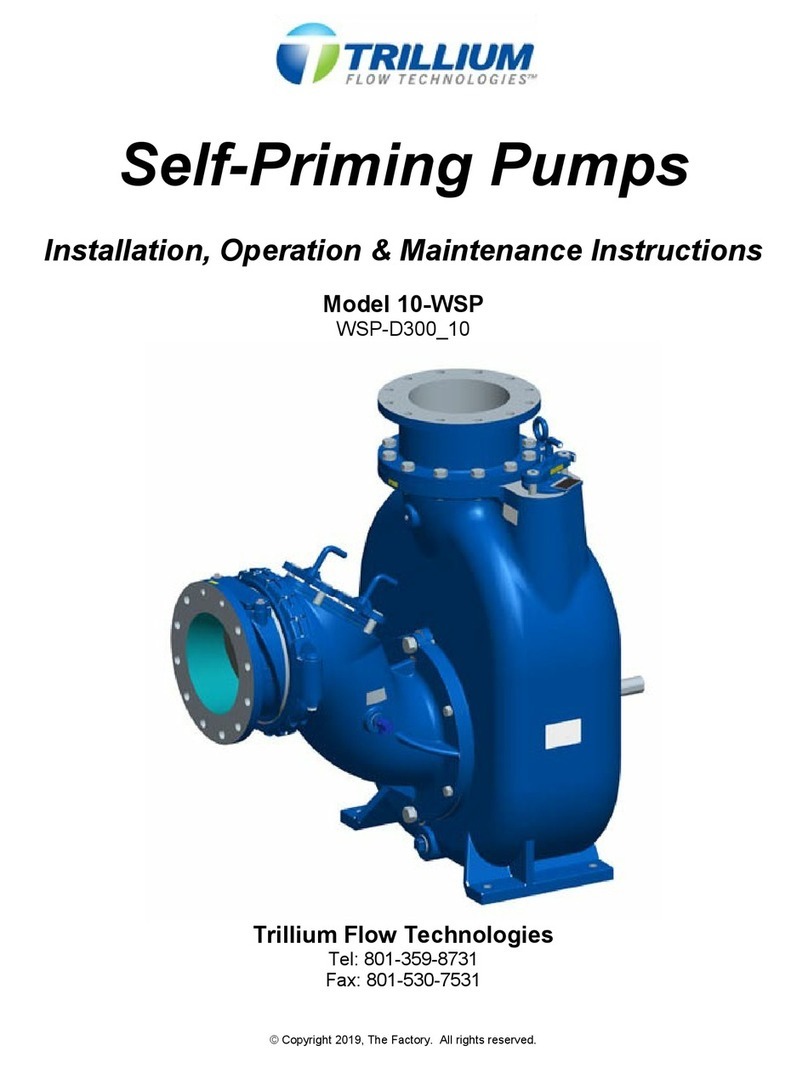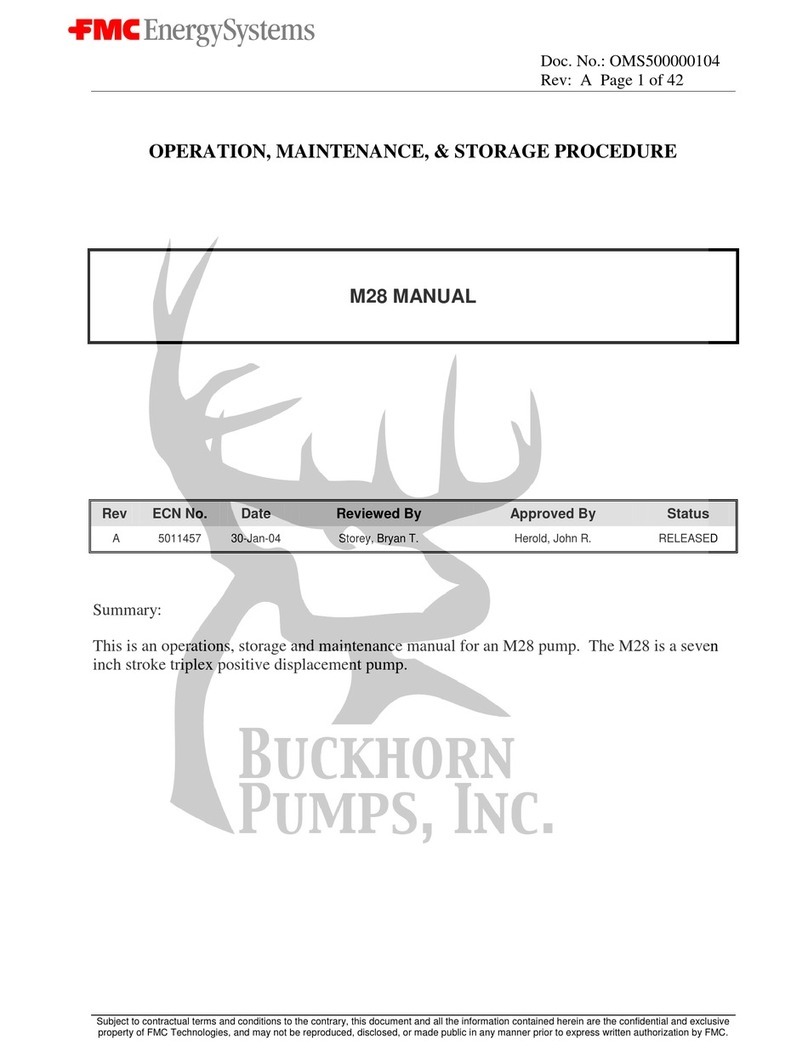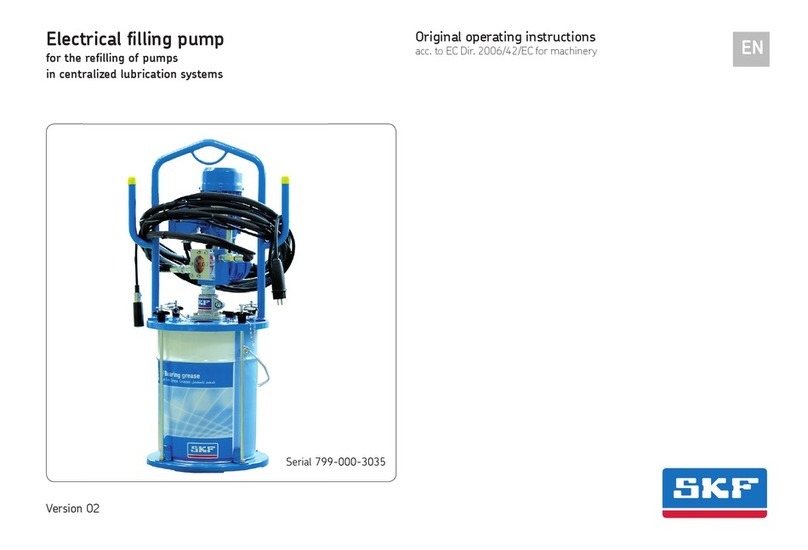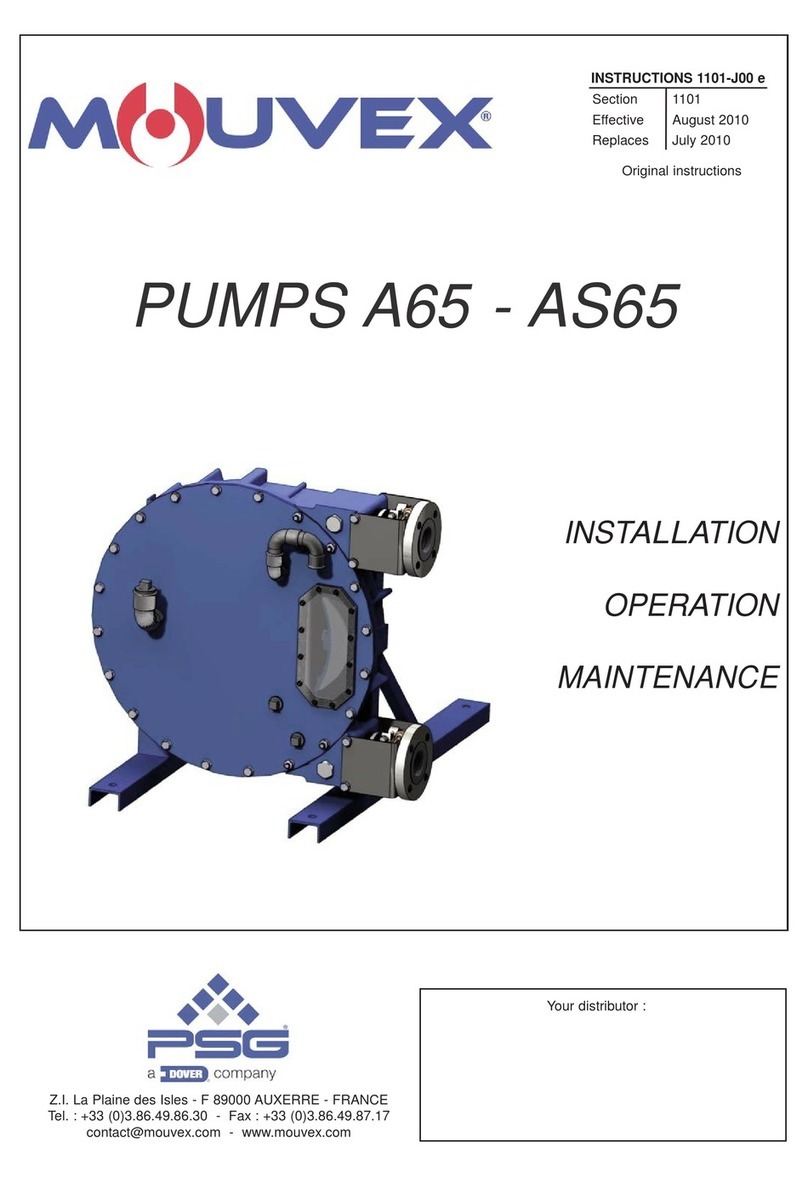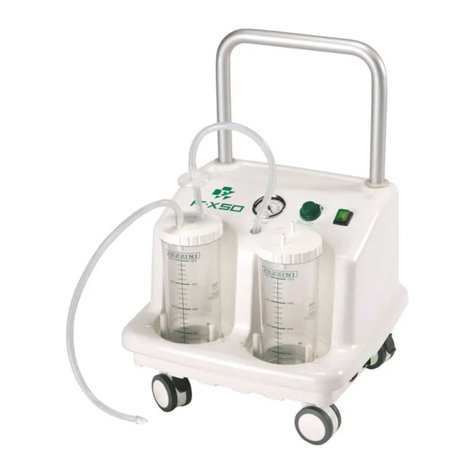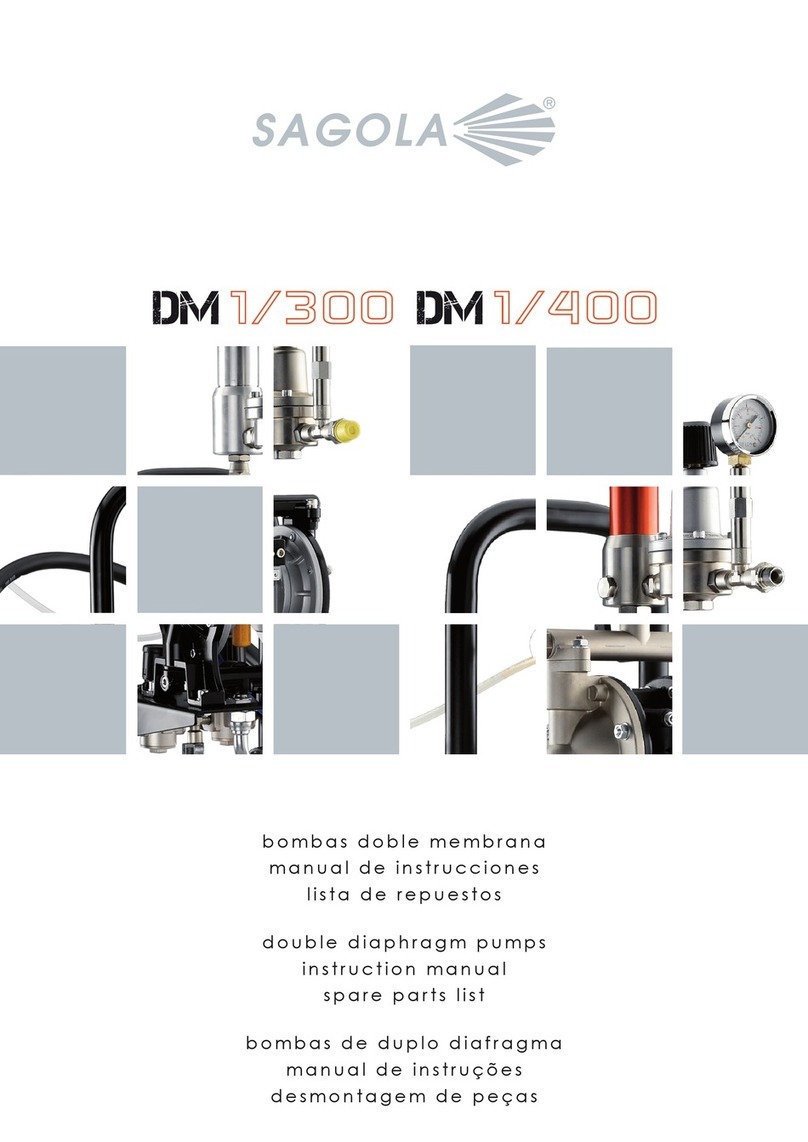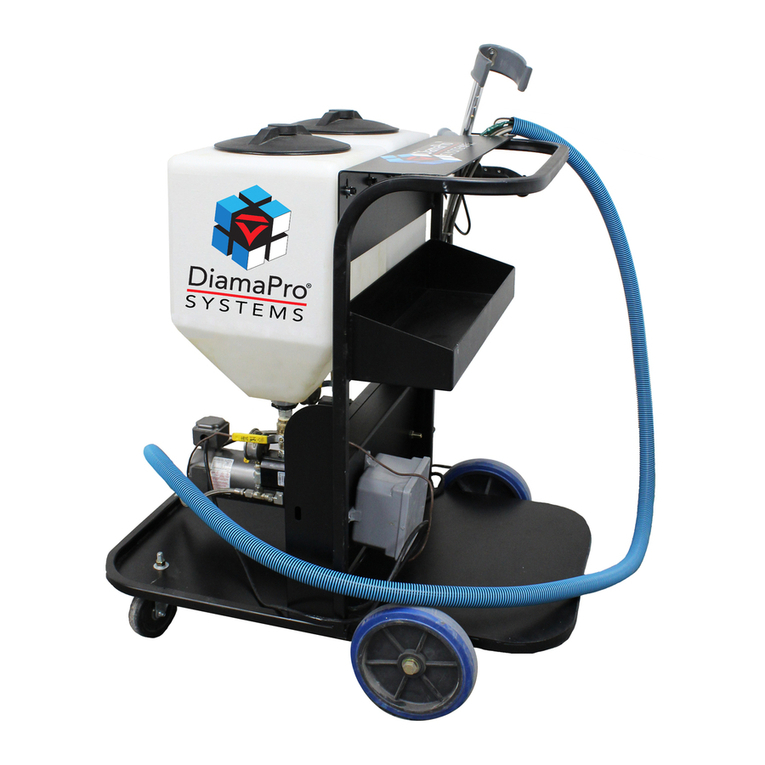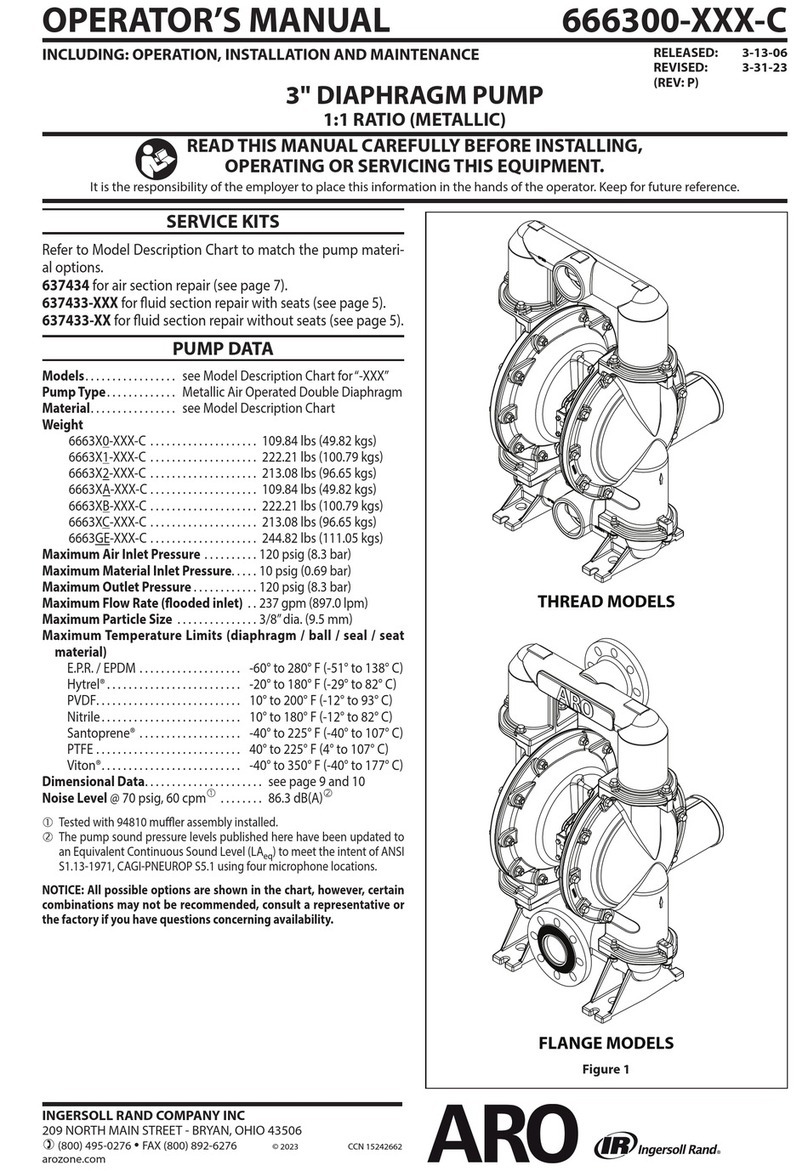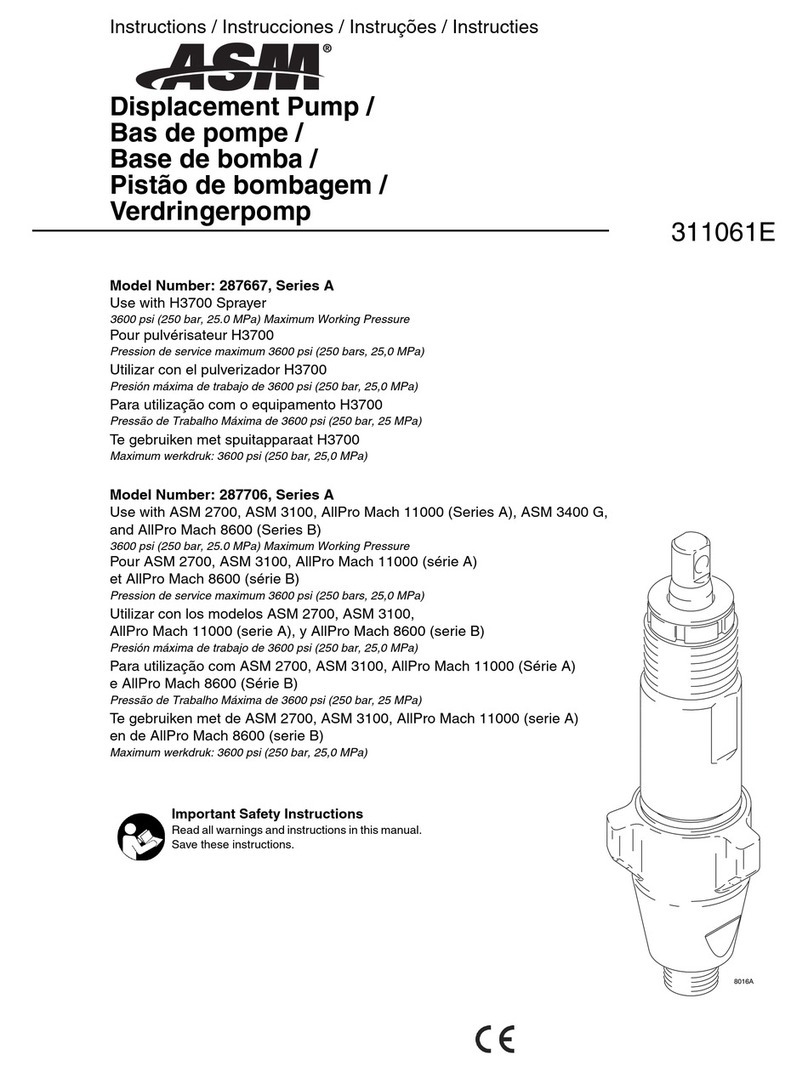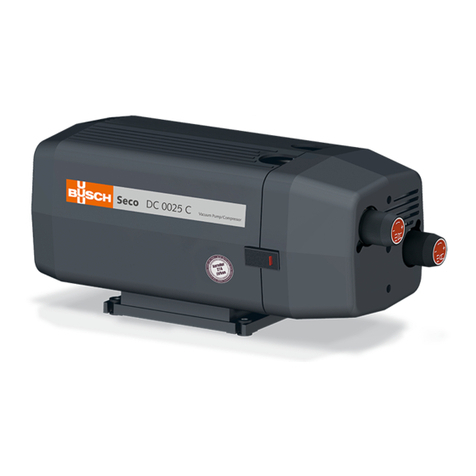
15
S
mptom Cause Remed
1. No fluid pressure ①Air regulator valve not opened. ①Fully open (turn clockwise).
②Defective pressure gauge ②Replace it with a new one.
③Poor cleaning: Pump valve stuck due
to hardened paint ③Flush thoroughly with thinner.
If hardened paint still remains after that,
disassemble pump and clean.
2. Pressure does
not rise to
working
pressure
①Air in fluid passage ①Pull spray gun trigger for air bubble purging
through fluid circulation.
②Insufficient fluid supply ②Replenish fluid.
③Worn V packings ③, ④Replace V packings following V
Packing Replacement Procedure.
④V packing installed in reversed
direction
⑤Clogged suction filter not sucking
enough ⑤Clean suction filter (8).
3. Pump runs, but
amortizing
poorly
①Insufficient compressed air supply
capacity ①Replace compressor with one with larger
capacity.
②Compressed air supply hose too small
in diameter ②Use larger hose in terms of diameter.
③Much compressed air consumed
elsewhere ③Provide a separate compressed air source
for exclusive use.
④Air regulator not operating properly or
setting pressure too low ④Readjust.
⑤Insufficient fluid ⑤Replenish fluid.
⑥Clogged material filter ⑥Clean filter.
⑦Worn air motor valve or pump packing ⑦Replace perishable parts with new ones
following Parts Replacement Procedure.
⑧Nozzle of filter clogged with foreign
materials ⑧Flush and clean.
⑨Worn nozzle ⑨Replace nozzle with a new one.
(If worn too fast, suspect nozzle
compatibility with fluid. Also, if pressure too
high, nozzle service life gets shorter.)
4. Fluttering spray
and tails ①(1) through (9) per 3 above, apply ①Check (1) through (9) per 3 above.
②Fluid viscosity too high ②Adjust viscosity to proper level.
5. Pump does not
stop when stop
spraying
①No fluid ①Replenish fluid.
②Leak from fluid passage ②Bring fluid pressure down to zero and
retighten.
③Worn V packings ③Replace V packings with new ones.
6. Pump fails to
operate if
compressed air
introduced
①Seizure of rod and oiles metal ①Disassemble and clean rod and metal.
Replace oil seal with new one.
If damage is found to rod or metal replace.
②Packing retainer, (2) on page 24, too
tight ②Loosen packing retainer.
The retighten it by hand until you can not
turn it any further.
Then turn it about another 15~30using
a spanner. That will be tight enough.
7. Air leak
(Sound is heard
when air leaks)
①Air valve is stuck in middle of stroke ①Remove cap and lift trip rod.
②Air valve is defective ②Replace
③Spring is defective ③Replace
8. Pump operates,
but output low ①Clogged suction filter ①Remove and clean.
If filter gets clogged all too soon, suspect
incompatibility. Contact us.
②Worn V packings affecting suction
performance ②Replace packings with new ones
③Foreign materials between valve seat
and ball ③Remove and clean
9. Fluid flow
suddenly stops
while spraying
Clogged nozzle Dip nozzle into thinner for a while to make
foreign materials softer. Then blow out with
compressed air from the opposite end.
Troubleshooting




















